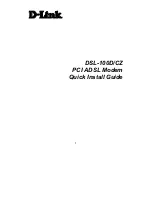
TS4000 Radio Modem User’s Manual
Serial Port
13
Serial Port
The serial port provides an asynchronous data connection between the TS4000
and the host equipment. The TS4000 serial port is a standard RS-232 serial port
with a number of options to allow connection to a wide variety of serial host
equipment.
The EIA (Electronic Industries Association) RS-232C standard is a standard for
short distance (less than 50 feet) serial communications. The standard defines
the electrical signal levels, interface characteristics and the operation of the
control signals (handshake lines). Although the standard defines the operation of
the handshake lines, there is significant variation in the way these signals are
used by different equipment.
RS-232 Serial Port
Basics
The RS-232 standard does not require the use of a specific connector. However,
most asynchronous RS-232 serial ports use either a 9 pin or 25 pin subminiature
D connector. The same signals are provided with both connectors, but of course
the pinouts are different (see Appendix A - Serial Port).
Connectors
RS-232 serial ports come in two varieties - DCE (Data Communication
Equipment) and DTE (Data Terminal Equipment). This defines the direction of
the serial port’s lines (driven or received). It also typically defines the polarity of
the connector. DCEs typically use female pin connectors and DTEs typically use
male pin connectors.
DCE vs. DTE
Connecting a DCE port to a DTE is the most common setup and requires a
standard straight through cable (i.e. pin 1 to pin 1, pin 2 to pin 2, etc.). When
connecting two DCEs or two DTEs together a null modem cable is required. The
purpose of a null modem cable is to cross connect the appropriate signals.
However, null modem cables are not all the same and therefore it is important to
verify that a specific cable is appropriate for a specific application.
The TS4000 is designed to work with asynchronous serial ports. Asynchronous
ports do not use clocks or timing signals to synchronize data transfers. Instead
data is framed into asynchronous characters which the ports synchronize to.
Asynchronous Data
An asynchronous character consists of a start bit, data bits and stop bits. The
start bit indicates the beginning of a character. The number of data bits varies,
but is typically between 7 and 9 bits. The data bits sometimes include a parity bit
that provides error check information with each character. The number of stop
bits also varies but is typically 1 or 2 bits.
Flow control is the method for controlling the flow of data between the DCE and
DTE. Flow control is used to prevent the DTE and DCE data receive buffers
from overflowing. There are several different methods used for flow control and
as with everything related to RS-232 there is no one standard. The two main
variations of flow control are hardware flow control that utilizes the RS-232
handshake lines and software flow control that utilizes characters sent along with
the normal data.
Flow Control
Hardware flow control typically uses two control lines, one for each direction of
data. When a port activates its flow control signal it is indicating its readiness to
receive data. Deactivating the flow control signal indicates that the port can no
longer receive data because its buffer is full or close to full.
Hardware Flow Control
















































